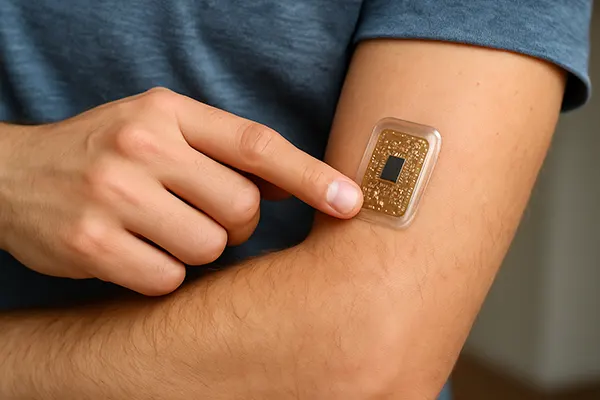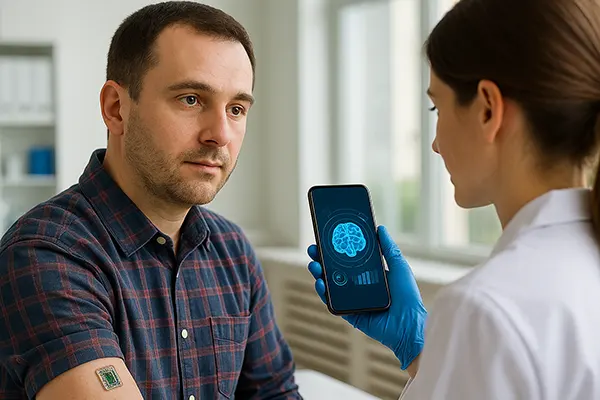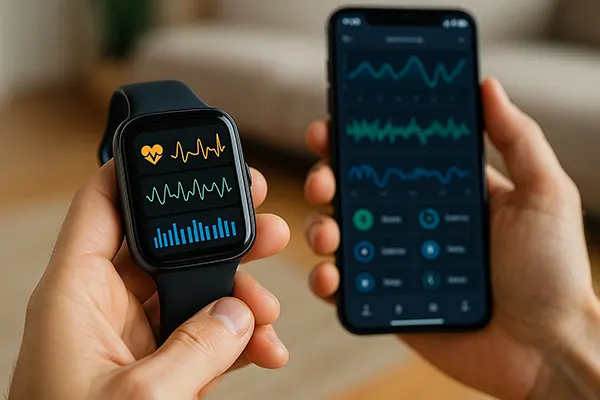Subdermal Biochips for Personal Diagnostics: Innovation Beneath the Skin

Wearable health technologies have transformed from simple wristbands to complex subdermal biochips that continuously monitor biomarkers in real-time. In 2025, this innovation is rapidly becoming a game-changer in personalised diagnostics. Instead of relying on episodic blood tests or consumer-grade wearables, subdermal biochips offer persistent insight into a person’s internal state, improving disease prevention, management, and overall health awareness.
How Modern Biochips Work
The latest generation of subdermal biochips integrates microelectronics, biosensors, and wireless communication into a single, implantable unit. These devices are inserted just beneath the skin and designed to continuously monitor physiological parameters such as glucose, lactate, oxygen saturation, and even dehydration levels. Their data is transmitted in real-time to mobile apps or secure health records, enabling immediate response or long-term trend analysis.
Such biochips are powered by miniature batteries or through energy harvesting from body heat and motion. Some use optical sensors or fluorescence markers that react to specific biochemicals in interstitial fluid. This allows the chip to deliver medical-grade data without blood draws. Advanced models also come with alert functions for medical staff or caregivers.
Most importantly, these systems require no user interaction. Once implanted, they perform silently in the background, offering unparalleled continuity in health tracking — ideal for chronic disease patients, athletes, and even soldiers operating in extreme conditions.
Benefits Beyond Traditional Testing
One of the most significant advantages of biochips is their ability to monitor fluctuations as they occur, not just at set testing intervals. This is vital for detecting acute events, such as hypoglycemia or sepsis onset, early enough to intervene. For chronic illness management, data collected over weeks or months reveals trends that could be easily missed during occasional clinic visits.
Additionally, biochips remove the need for patient compliance — no daily finger pricks, urine samples, or remembering to wear a device. This offers a higher quality of life and better clinical outcomes. Paired with artificial intelligence, biochip systems can also provide personalised recommendations based on real-time biomarker patterns.
While most consumer wearables provide surface-level data (e.g. heart rate), implantable sensors dig deeper — literally — offering biochemical intelligence previously accessible only through lab diagnostics. This makes them ideal for proactive rather than reactive healthcare strategies.
Startups Leading the Way
Among the most recognised innovators in this space is Dsruptive, a Swedish company specialising in passive, injectable health monitoring chips. Their minimalist chips, about the size of a grain of rice, are designed to track temperature and can integrate with broader biometric systems. Dsruptive focuses on providing solutions with high biocompatibility and ultra-low power consumption.
Another key player is Profusa, a US-based company whose Lumee® Oxygen Platform uses soft hydrogel biosensors to track oxygen levels in tissue. Their system is already being piloted in clinical settings and military contexts, with funding from DARPA and the NIH. The biosensor pairs with a wearable reader and transmits encrypted data to remote health databases.
These companies reflect a growing intersection of biotech, medtech, and consumer electronics — fields that were traditionally siloed. With increasing global demand for personalised, accessible diagnostics, investment and innovation in this domain are accelerating rapidly.
Market Outlook and Global Adoption
The global biochip market is projected to exceed $30 billion by 2030, with Europe and North America leading adoption due to supportive regulatory frameworks and high health-tech investments. However, Asia-Pacific is expected to show the fastest growth, driven by smart city initiatives and public health monitoring projects.
Many health systems are exploring public-private partnerships to integrate implantable diagnostics into preventative care models. Health insurers are also beginning to recognise their value in reducing long-term costs by enabling early interventions and lowering hospital readmissions.
As the technology matures, prices are expected to fall, making it more accessible to middle-income populations. Mass deployment, however, will depend on social acceptance, ethical clarity, and regulatory harmonisation.

Ethical Challenges and Privacy Concerns
Despite their potential, biochips raise serious questions about bodily autonomy, surveillance, and data ownership. The notion of a chip under the skin can trigger fears of tracking or forced compliance. This is especially sensitive in regions with histories of surveillance abuse or weak data protection laws.
Privacy concerns also arise from real-time health data transmission. Who has access to this data? How is it stored? What happens if it’s hacked or misused by insurance firms or employers? Transparency and control over one’s medical data must be embedded into the system design — both legally and technically.
Experts stress the importance of clear consent protocols, data encryption, and strong anonymisation practices. Without these, the risk of misuse could overshadow the medical benefits, particularly in vulnerable populations or politically unstable environments.
Public Trust and Regulation
To ensure ethical adoption, international regulatory bodies — such as the EMA and FDA — are developing frameworks to govern implantable diagnostic devices. These cover clinical safety, patient consent, and data transparency. But regulation is only part of the equation; public trust is paramount.
Education campaigns, transparent communication from developers, and third-party oversight can help reassure users. Some startups already involve bioethicists in product development to ensure social responsibility is embedded from the outset.
Ultimately, societal attitudes will shape the future of biochip diagnostics as much as technological capabilities. Balancing innovation with human dignity, autonomy, and rights is the true challenge of this next-generation health technology.




